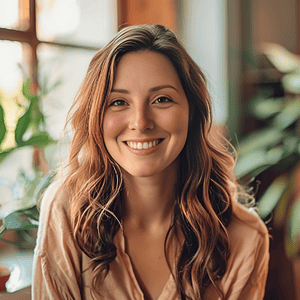Introduction
In the vast realm of artistic expression, selecting the right medium holds paramount importance. Among the plethora of choices, acrylic gouache and acrylic paint stand out as versatile options, each with its distinctive features and applications. In this comprehensive guide, we delve deep into the nuances of acrylic gouache versus acrylic paint, empowering you to make an informed decision that aligns with your artistic vision.
Understanding Acrylic Gouache
Acrylic gouache, a relatively recent addition to the artist’s palette, merges the characteristics of traditional gouache with the versatility of acrylic paint. Let’s explore its defining attributes:
1. Composition and Characteristics
Acrylic gouache inherits the matte, opaque finish and water solubility of traditional gouache but incorporates an acrylic polymer binder for enhanced water resistance and permanence upon drying. This composition gives rise to a unique painting medium with a myriad of possibilities.
2. Versatility and Application
The beauty of acrylic gouache lies in its adaptability across various techniques. It gracefully accommodates thin washes akin to watercolor, while also embracing thick layers reminiscent of acrylic paint. Whether you’re into layering, glazing, or impasto, acrylic gouache rises to the occasion, offering a playground for artistic experimentation.
3. Color Vibrancy and Opacity
Acrylic gouache boasts vibrant, opaque colors that retain their brilliance even after drying. This inherent opacity ensures impeccable coverage, making it a preferred choice for artists seeking bold, solid hues in their compositions.
Understanding Acrylic Paint
Acrylic paint, revered for its versatility, expedited drying time, and durability, has long been a staple in the artist’s arsenal. Here’s a closer look at its characteristics:
1. Composition and Characteristics
Comprising pigments suspended in an acrylic polymer emulsion, acrylic paint undergoes rapid drying as the water within the emulsion evaporates upon application. The resultant layer exhibits flexibility and water resistance, setting the stage for endless creative possibilities.
2. Versatility and Application
Acrylic paint’s versatility knows no bounds, as it effortlessly adheres to a myriad of surfaces, including canvas, wood, paper, and fabric. Its adaptability allows for seamless transitions between thin, translucent washes and thick, textural impastos, catering to a diverse range of artistic styles.
3. Fast Drying Time
Gone are the days of prolonged waiting associated with oil paints; acrylic paint dries swiftly, facilitating uninterrupted artistic flow. Artists can layer, blend, and experiment to their heart’s content, with the assurance that their creations will soon be ready for the next phase of refinement.
Comparing Acrylic Gouache and Acrylic Paint
Now, let’s juxtapose acrylic gouache and acrylic paint to discern their contrasting attributes:
1. Opacity
- Acrylic Gouache: Renowned for its impeccable opacity, acrylic gouache delivers solid coverage even in the thinnest of layers.
- Acrylic Paint: While acrylic paint can achieve opacity, it may necessitate multiple layers to rival the steadfast coverage of acrylic gouache.
2. Versatility
- Acrylic Gouache: The epitome of versatility, acrylic gouache embraces an array of techniques, from delicate washes to bold impastos, catering to artists’ diverse creative impulses.
- Acrylic Paint: Equally adaptable, acrylic paint seamlessly transitions between various applications, offering a canvas for artistic experimentation and innovation.
3. Drying Time
- Acrylic Gouache: While acrylic gouache dries swiftly upon exposure to air, its thicker consistency may prolong the drying process compared to acrylic paint.
- Acrylic Paint: Rapid drying is a hallmark of acrylic paint, with artworks often ready for further layers or varnishing within minutes to hours of application.
4. Water Resistance
- Acrylic Gouache: Thanks to its acrylic polymer binder, acrylic gouache exhibits superior water resistance, ensuring the longevity of artworks in diverse environments.
- Acrylic Paint: Upon drying, acrylic paint forms a water-resistant layer, making it suitable for both indoor and outdoor applications.
Choosing the Right Medium for Your Art
As you embark on your artistic journey, consider the following factors to guide your selection of the ideal medium:
1. Desired Finish
- Opt for acrylic gouache for a matte, opaque finish that exudes elegance and depth.
- Choose acrylic paint for a glossy, translucent finish that lends vibrancy and luminosity to your compositions.
2. Painting Techniques
- Embrace acrylic gouache’s versatility if you revel in exploring diverse painting techniques and textures, from subtle washes to bold impastos.
- Harness the rapid drying time of acrylic paint if you seek to layer, blend, and experiment without constraints, allowing your creativity to flow freely.
3. Surface Compatibility
- Assess the surface you intend to paint on, ensuring compatibility with your chosen medium. While both acrylic gouache and acrylic paint accommodate a wide range of surfaces, acrylic gouache may offer enhanced adherence to paper substrates due to its water-based formulation.
Conclusion
In the dynamic realm of artistic expression, the choice between acrylic gouache and acrylic paint serves as a pivotal decision, shaping the trajectory of your creative endeavors. By comprehensively exploring the distinctive characteristics of each medium and considering factors such as opacity, versatility, drying time, and surface compatibility, you empower yourself to make an informed choice that resonates with your artistic sensibilities. Embrace experimentation, unleash your creativity, and let your chosen medium become a conduit for boundless self-expression. Your artistic odyssey awaits—seize it with confidence and conviction. Happy painting!

Leave a Reply